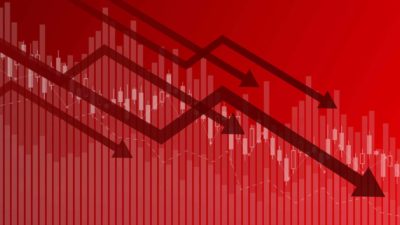The S&P/ASX 200 Index (ASX: XJO) bounced even as the Reserve Bank of Australia (RBA) lifted interest rates to a more than three-year high today.
The central bank increased the cash rate by 50 basis points to 1.35% as it moved to curb high inflation. Rates have not been this high since May 2019.
Higher rates are typically bad news for ASX shares, but there could be a good reason why investors see a silver lining.
Why ASX 200 shares jumped with the RBA rate hike news
For one, RBA Governor Philip Lowe seems to be sitting on the fence when it comes to the size of future rate hikes.
Many economists are predicting the RBA will follow through with at least another 50-point hike next month.
While the RBA indicated further hikes are on the way in the coming months, Lowe's statement was more balanced than some might have thought.
Another big interest rate hike isn't a given
If anything, our central bank said the size and timing of future hikes will be guided by incoming data. This suggests another large hike next month isn't a given.
This could explain why the ASX 200 moved higher on the news to trade 0.6% in the black in the last hour of trade. It also explains why the Australian dollar stayed sluggish at around US68.6 cents. The Aussie would have jumped if the RBA was more hawkish.
Biggest swing factor
It appears that a key swing factor the RBA is watching is household spending. Recent economic data suggests spending remains positive although this could change. Lowe said:
Household budgets are under pressure from higher prices and higher interest rates. Housing prices have also declined in some markets over recent months after the large increases of recent years. The household saving rate remains higher than it was before the pandemic and many households have built up large financial buffers and are benefiting from stronger income growth. The Board will be paying close attention to these various influences on household spending as it assesses the appropriate setting of monetary policy.
This suggests that if we don't want much higher rates, we should curb our spending.
Other things the RBA is watching
The other factors that the RBA will be watching are employment and the outlook for inflation. Lowe appears to be a little more confident with forecasting these remaining drivers.
He noted that the labour market looks to be strong due to the worker shortage. The unemployment rate fell to a near 50-year low of 3.9% in May, while underemployment also declined significantly. The RBA believes this trend is likely to persist in the months ahead.
Meanwhile, the RBA is forecasting inflation to peak this year before quickly falling back to its 2% to 3% comfort zone next year.
So, if households do cut back on consumption, interest rates may not need to climb as quickly or as high as the markets fear, even if employment remains low.









